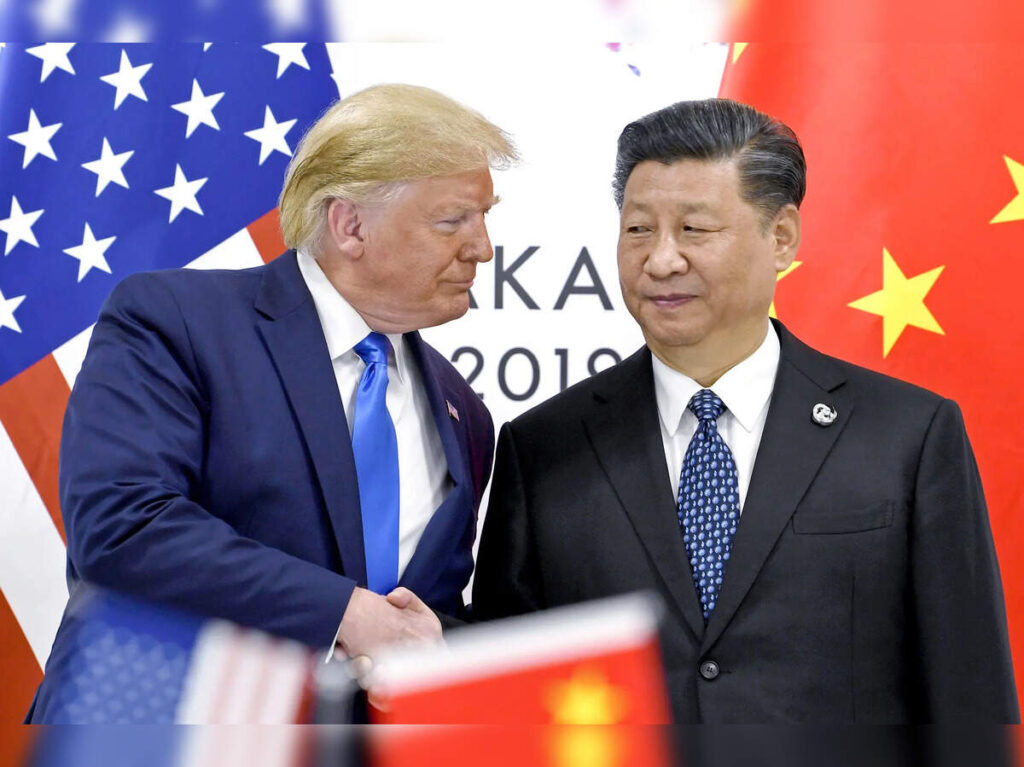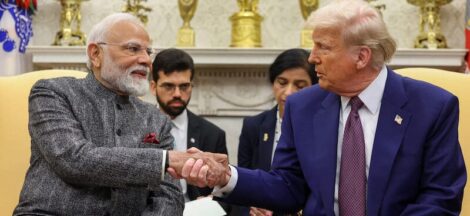By Dr Imran Khalid
Donald Trump’s latest economic fusillade against China – a staggering up to 145% tariff on Chinese imports, paired with a temporary 90-day reprieve for other trading partners – is less a coherent strategy than a theatrical flourish. The move, announced with typical bluster, appears calibrated for domestic political consumption: a show of strength against Beijing while offering superficial olive branches to allies he had alienated just days earlier. But beneath the campaign-trail posturing lies a perilous miscalculation. This is not merely another volley in the long-running U.S.-China trade war; it is a deliberate provocation, an attempt to force Beijing into economic submission while re-centering global trade around American dominance. The risks, however, far outweigh the potential rewards.
China will not respond with mere retaliatory tariffs – though those are already underway. Instead, expect a far more sophisticated counteroffensive, one that exploits the very divisions Trump’s selective tariff pause has exposed. Beijing will surely focus its retaliation on politically sensitive U.S. exports – agricultural goods from the Midwest, high-tech components from swing states – while redoubling efforts to woo the very nations Trump has temporarily spared. The message will be conveyed: China, not the U.S., is the more reliable economic partner.
The deeper, more consequential response, however, will be structural. Beijing has long sought to reduce its dependence on American markets and the dollar-dominated financial system. Trump’s latest escalation will accelerate that decoupling. Look for China to fast-track domestic innovation, expand its influence through the Regional Comprehensive Economic Partnership (RCEP), and deepen ties within the BRICS bloc – a coalition increasingly positioned as an alternative to U.S.-led economic institutions. The endgame? A global trade ecosystem where China is not the disruptor, but the stabilizing force – especially if Trump’s return to the White House brings renewed volatility.
Trump’s approach to trade negotiations has always followed a familiar script: maximalist demands, public brinkmanship, and a last-minute “deal” that allows him to declare victory, regardless of its substantive merits. This time will be no different. His goal is not to rebalance trade or reform China’s economic practices – it is to engineer a political spectacle. He will likely push for superficial concessions – a handful of U.S. factories relocating supply chains, symbolic commitments from allies to limit Chinese imports – then tout these as historic triumphs.
But the collateral damage will be profound. The rules-based trading system the U.S. helped construct after World War II is already under strain; Trump’s unilateralism risks shattering it entirely. By weaponizing tariffs so selectively, he has handed other nations both an incentive and an opportunity to recalibrate their economic strategies – often at America’s expense. The European Union, long wary of Trump’s capriciousness, will likely use this moment to assert greater strategic autonomy. Brussels may seek to bolster the World Trade Organization as a check on U.S. unilateralism while cautiously expanding trade ties with China – not as an endorsement of Beijing’s policies, but as a hedge against Washington’s unpredictability.
Mexico, a prime beneficiary of nearshoring, stands to gain from U.S.-China tensions – but its leadership is pragmatic. They recognize the fragility of relying too heavily on a mercurial American partner. Expect Mexico to quietly diversify, deepening commercial links with both China and the EU to insulate itself from future U.S. protectionism. Brazil, under President Lula, is positioning itself as a pivotal swing state in the emerging trade order. With deep agricultural ties to China and growing BRICS engagement, it has little interest in choosing sides – unless the economic incentives are overwhelming. India, frequently seen as a natural U.S. partner in offsetting China’s influence, finds itself navigating a careful balancing act. While wary of Beijing’s ambitions, New Delhi is unlikely to join Trump’s tariff crusade outright. Instead, it will focus on expanding its own industrial base, courting investment from all sides, and strengthening South-South trade networks.
Trump’s tariffs are not just another chapter in U.S.-China rivalry – they are accelerating the unravelling of the post-Cold War economic order. The world is splintering into competing blocs, each with its own trade rules, technological standards, and financial systems. For smaller nations, this means more options, but also more pressure to navigate an increasingly polarized landscape.
The greatest casualty may be the liberal, interconnected globalization the U.S. once championed. Trump’s zero-sum approach – rooted in grievance rather than strategy – threatens to hasten the decline of American economic leadership. China will not capitulate; it will adapt. And the rest of the world, far from rallying behind Washington, will seek resilience in diversification. Trump’s aggressive nationalism may achieve the opposite of what he intends: not American primacy, but a fractured, multipolar world where the U.S. is just one player among many – and where the global economy learns to thrive without deference to Washington. (IPA Service)
By arrangement with the Arabian Post




 BJP Worried At Akash Anand’s Induction Into BSP Leadership By Mayawati Again
BJP Worried At Akash Anand’s Induction Into BSP Leadership By Mayawati Again 